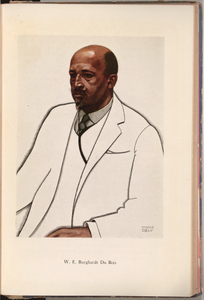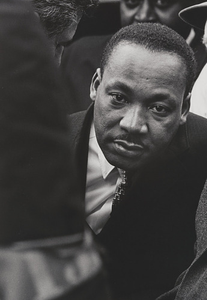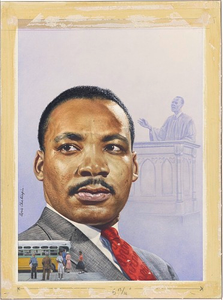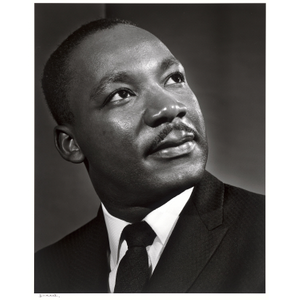Description
Of the individuals leading America’s civil rights movement, Roy Wilkins sometimes seemed comparatively subdued, especially as the protests over discrimination escalated into militancy in the 1960s. Yet Wilkins’s quiet manner and emphasis on working through courts and legislatures did not mean that his determination to win justice was less than that of his more vocal allies. As a long-term official of the NAACP and for many years its executive secretary, Wilkins was a chief architect of the strategy that in 1954 led to the Supreme Court’s order to end school segregation. In the decade following, he played a central role in lobbying Congress for the most sweeping civil rights legislation in U.S. history.Henry Koerner’s portrait of Wilkins ran on the cover of Time for August 30, 1963—Wilkins’s sixty-second birthday and two days after the historic March on Washington for Jobs and Freedom.Roy Wilkins 1901–1981Comparado con los demás líderes del movimiento pro derechos civiles en Estados Unidos, Roy Wilkins parecía más sobrio, sobre todo a medida que las protestas por la discriminación escalaron hacia la militancia en los años sesenta. Pero su actitud discreta y su énfasis en trabajar a través de los tribunales y la legislatura no significan que estuviese menos resuelto a lograr justicia que sus aliados más extrovertidos. Wilkins fue por muchos años oficial de la NAACP (Asociación Nacional para el Progreso de las Personas de Color) y también su director ejecutivo. Como tal, fue uno de los arquitectos de la estrategia que en 1954 llevó al Tribunal...
Image
Oil On Canvas
National Portrait Gallery, Smithsonian Institution; gift of Time magazine
Record Contributed By
National Portrait GalleryRecord Harvested From
Smithsonian InstitutionKeywords
- Activist
- Activists
- Civil Rights
- Civil Rights Activist
- Civil Rights Leader
- Communications
- Congressional Gold Medal
- Costume
- Crowd
- Dress Accessories
- Dress Accessory
- Editor
- Editorial Writer
- Editors
- Human Figures
- Journalism
- Journalist
- Koerner, Henry
- Magazine
- Male
- Men
- Necktie
- Neckties
- Periodicals
- Portrait
- Portraits
- Presidential Medal Of Freedom
- Reformer
- Reformers
- Roy Wilkins
- Society And Social Change
- Tie
- Wilkins, Roy





















